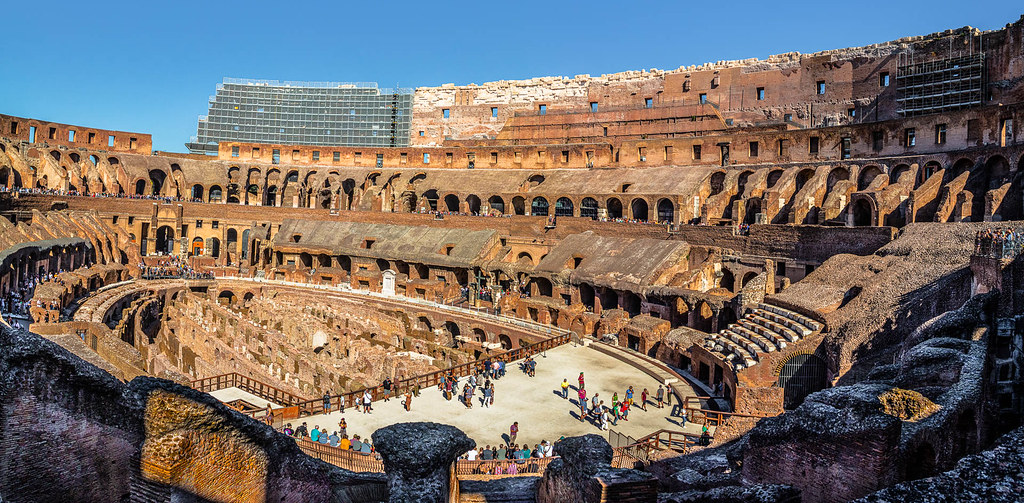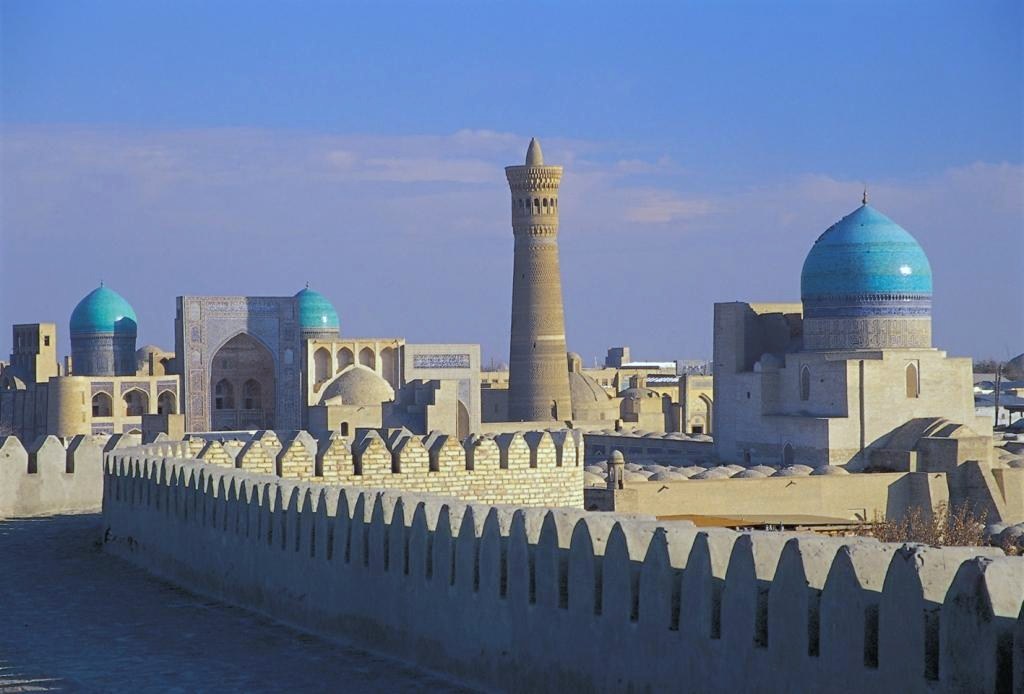Imagine strolling through the heart of ancient Rome, surrounded by the majestic ruins that whisper tales of a bygone era. This was the reality for my mother and her friends back in 1981, as they explored the Roman Forum and the Colosseum, two of the most significant landmarks of the Eternal City. Before the advent of mandatory entry fees and the long lines that are now all too familiar, they had the freedom to wander these historic sites with a sense of ownership and intimacy that is hard to come by today. They could even take a nap amidst the ruins, fully immersed in the echoes of antiquity.
The Roman Forum: A Testament to Rome’s Grandeur
The Roman Forum, or Forum Romanum in Latin, was once a bustling marketplace and the nucleus of Roman public life. It was here that the citizens of Rome would gather for political, judicial, and social activities. The Forum was home to triumphal processions, elections, public speeches, criminal trials, and gladiatorial matches. It was a place where statues and monuments stood in commemoration of the city’s great leaders, and where the heartbeat of ancient Rome could be felt most strongly.
Nestled in the valley between the Palatine and Capitoline Hills, the Forum was a sprawling ruin even in 1981, but it still attracted sightseers from all over the world. My mother recalls the sense of awe she felt as she walked on the same stones that once bore the sandals of senators and citizens alike. The Forum was a testament to Rome’s grandeur, housing many of the oldest and most important structures of the ancient city, such as the Regia, the Temple of Vesta, and the complex of the Vestal Virgins.
The transformation of the Forum from a marshy lake to the center of Roman civilization is a story of human ingenuity and determination. The Cloaca Maxima, one of the world’s earliest sewage systems, was instrumental in draining the area and making it suitable for development. Over time, the Forum evolved organically, with buildings like the Senate House, government offices, and various temples and memorials adding to its grandeur.
Julius Caesar played a significant role in the Forum’s development, constructing the Basilica Julia and the new Curia Julia, which shifted the focus of judicial activity and reaffirmed the Senate’s presence in the area. The Forum continued to serve as a central square where Romans could engage in a variety of pursuits, and it remained a political hub until the fall of the Western Roman Empire.
The Forum’s layout was not the result of a single architectural plan but rather the accumulation of many centuries of building and rebuilding. This piecemeal development led to a final form that was a rectangle approximately 130 by 50 meters in size. The Forum’s basilicas defined its long sides, with the Basilica Aemilia to the north and the Basilica Julia to the south.
My mother’s photographs from that day show a landscape that is both timeless and transient. The ruins stand as a reminder of the Forum’s past significance, but also of the relentless passage of time that has seen the Forum rise from a lake to the center of an empire, and then to a revered ruin. The Forum was, and still is, a place where history is palpable, where one can almost hear the echoes of Cicero’s orations or the roar of the crowd during a triumphal procession.
As my mother and her friends continued their journey through the Forum, they were walking on history itself. The ground beneath their feet had been raised over the centuries due to sediment from the Tiber’s flooding and erosion from the surrounding hills. The travertine paving they saw, which dates back to the reign of Augustus, was just the latest layer in a deep archaeological cake.
The Forum was not only a place of commerce and governance but also a venue for grand military processions known as Triumphs. Victorious generals would enter the city through the western Triumphal Gate and proceed along the Via Sacra before ascending the Capitoline Hill to the Temple of Jupiter Optimus Maximus. These events were followed by public banquets in the Forum, adding to the area’s atmosphere of celebration and community.
The history of the Forum is as rich and complex as the history of Rome itself. From its pre-Roman period, when it served as a cemetery, to its development into the political and social heart of the Roman Kingdom and Republic, the Forum has been a witness to the evolution of Roman society. The transformation from a place of burial to a vibrant public space reflects the dynamic nature of Roman civilization and its ability to adapt and thrive.
In the Roman Kingdom, the Forum was associated with the alliance between Romulus and Titus Tatius, marking it as a place of peace and cooperation. It was here that the Sabine women intervened to stop the battle between their fathers and husbands, and where the two communities came together to form the nucleus of what would become Rome. The Forum’s significance continued to grow as it became the site of Rome’s first royal palace and the beginning of the cult of Vesta.
Throughout the Roman Republic, the Forum saw further development and specialization. It outgrew its original marketplace role, giving rise to other fora dedicated to specific goods and deities. The Forum became the stage for some of Rome’s most important temples, such as the Temple of Vesta, where the sacred fire of Rome was kept alight by the Vestal Virgins.
My mother’s adventure through the Roman Forum was more than just a sightseeing trip; it was a walk through the layers of history, a connection to the past that is seldom felt in the modern world. As they left the Forum behind, they carried with them memories of a place that, despite the passage of time, continues to inspire and captivate those who walk its ancient paths.

The Colosseum: An Icon of Ancient Rome
After their immersive experience at the Roman Forum, my mother and her friends continued their 1981 journey to another emblematic monument of ancient Rome: the Colosseum. Known to the Romans as the Flavian Amphitheatre, this grand structure was as much a marvel of engineering as it was a hub of entertainment. The Colosseum, an iconic symbol of Roman might and architectural prowess, stood as a testament to the ingenuity of the civilization that constructed it.
The Colosseum was built on the eastern side of the Roman Forum, and its construction was initiated by Emperor Vespasian in AD 70. It was completed by his son Titus in AD 80, with later improvements added by Domitian. These three emperors, known as the Flavian dynasty, gave the amphitheater its original name: Amphitheatrum Flavium. The Colosseum could hold, it is estimated, between 50,000 and 80,000 spectators, and it was used for gladiatorial contests and public spectacles such as mock sea battles, animal hunts, executions, re-enactments of famous battles, and dramas based on Classical mythology.
My mother’s photographs of the Colosseum from 1981 show a structure that, despite the ravages of time, earthquakes, and stone-robbers, still exuded an aura of ancient grandeur. She captured the immense arches and the remnants of the seating areas where the Roman populace once cheered and jeered. The arena floor, where gladiators fought for their lives, was long gone, revealing the complex underground structures known as the hypogeum. This subterranean network of tunnels and cages was where gladiators and animals were held before they were hoisted into the arena.
The Colosseum’s design was as practical as it was impressive. It featured a complex system of vaults that supported the seating areas and allowed for the weight of the crowds to be evenly distributed. The amphitheater was also ingeniously designed for crowd control, with its 80 entrances allowing for quick filling and evacuation. The spectators were seated according to their social status, with the best seats reserved for the senatorial class close to the action, while the higher, less desirable seats were allocated to the lower classes.
The exterior of the Colosseum was just as imposing as the interior. It originally had four floors, with the outer three floors consisting of arcades framed by half-columns of the Doric, Ionic, and Corinthian orders. The top level had windows and corbels that supported wooden masts from which an enormous canvas awning, the velarium, was hung to protect spectators from the sun or rain. The façade was originally adorned with marble statues in the niches of the upper floors, adding to its splendor.
My mother recounted how they marveled at the Colosseum’s ability to host such a variety of events. It was a place where Romans could experience the full spectrum of human emotion, from the thrill of victory to the solemnity of defeat. The amphitheater was not just a venue for entertainment but also a powerful tool for political propaganda, showcasing the might of the empire and the generosity of the emperors who provided such spectacles free of charge.
The Colosseum remained active for over four centuries, with the last recorded games held in the 6th century. After the fall of the Western Roman Empire, the structure was repurposed over the centuries. It served as a quarry for building materials, a fortress for the powerful Frangipane and Annibaldi families, and even as housing and workshops. It wasn’t until the 18th century that conservation efforts began to preserve the Colosseum as a historic monument.
As they walked around the massive structure, my mother and her friends could feel the weight of history around them. They imagined the roar of the crowd and the spectacle of the games. The Colosseum, like the Roman Forum, was a place where the past seemed to come alive, where every stone told a story of glory and tragedy.
The journey my mother and her friends took through the Roman Forum and the Colosseum in 1981 was a voyage through time. They experienced the grandeur of ancient Rome, the ingenuity of its people, and the enduring legacy of its monuments. These structures, which have withstood the test of time, continue to captivate and inspire awe in all who visit them. The memories of that day remain etched in my mother’s photographs and in the stories she shared, a testament to the timeless allure of Rome’s ancient heart.
The Colosseum and the Roman Forum are more than just tourist destinations; they are gateways to the past, offering a glimpse into the lives of those who walked their grounds centuries ago. As we look upon these monuments today, we are reminded of the incredible achievements of human civilization and the enduring power of history to move us. The echoes of ancient Rome still resonate in these ruins, inviting us to explore, to learn, and to remember.
Related posts:
Roman Forum
Exploring the Colosseum and the Roman Forum with Show Me Italy and Get Your Guide
Colosseum, Palatine Hill and Roman Forum Tour with Context Travel — La Vita Roma





